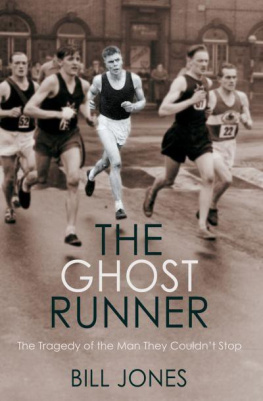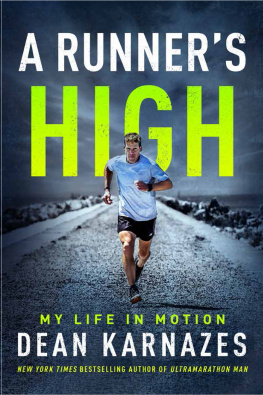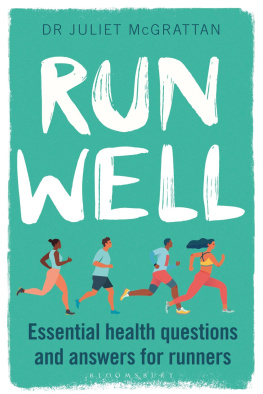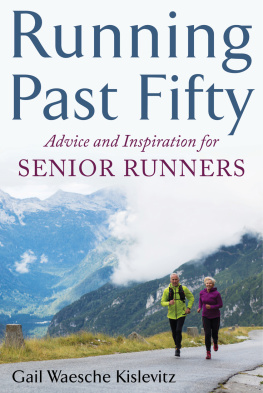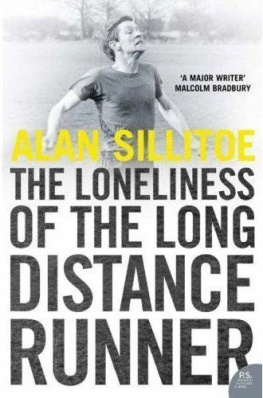About the Author
Bill Jones has been making award-winning documentaries for British television for almost 30 years years, most of them with Granada Television in Manchester. He now works as a freelance writer and programme-maker. This is his first book.
Acknowledgements
Three people above all others have made this book possible: Johns son, Roger, Johns widow, Edie, and Johns brother, Victor. Without their memories and precious archive without their unfailing enthusiasm and support Tarrants story would never have been told in this form. Almost every letter John was ever sent has been carefully stored by Edie, along with a great many others which the couple exchanged during his protracted absences. In addition, Edie has kept all her late husbands meticulously logged running diaries, newspaper cuttings and of course his prized cups and medals. She also kindly gave me her permission to quote from his deathbed memoir (and, except where stated otherwise, direct quotations from John are taken from that work, published as The Ghost Runner by Athletics Weekly in 1979). For these, and many other kindnesses, I am indebted to the Tarrant family.
Numerous others have helped along the way. Paul Krawczynski filled me in on Lamorbey and its history. John Sherratt, Pat Grundy, Clive Somers, Tom Hockenhull, Pat Carson, Tom Nadin and Dave Allsop helped colour in Tarrants early days in Buxton. Alice Campbell the girl next door shed crucial light on the teenage brothers. Tarrants half-brother and -sister, David and Elizabeth (both still in Buxton), were always welcoming and insightful, and proffered plastic bags full of memorabilia relating to their mother, Maysie, and Jack Tarrants early life.
Remarkably, almost all of Tarrants contemporaries on the road and track were alive, hearty and thrilled to be talking about the ghost runner. Notwithstanding a few plastic knees, the years had treated most of them kindly. In the Midlands, Arthur Keily (pushing 90) came to the door of his bungalow wearing a pair of football shorts. In Leeds, Bernard Gomersalls mind was as sharp and honest as his running. In Hereford, I spoke to Derek Davies and Ken Flowers, Tarrants companions in the TA. Ron Hill, Brian Kilby and Joe Lancaster (still smoking and living in Italy) recalled his wilful, restless years. Robbie Brightwell, Derek Ibbotson and Tom McNab added hugely to my understanding of the amateur conundrum. Almost without exception, everyone I spoke to had an opinion on Jack Crump and his successors. I have quoted from Crumps autobiography, Running Round the World, published by Robert Hale in 1966. Another useful background read was David Kynastons Austerity Britain, published by Bloomsbury in 2008, an evocative survey of the post-war years. The quotation from Womans Own in Chapter Five is taken from that book.
Other runners and friends weighed in with vital contributions: Noel Henry, Eddie Gutteridge, Phil Hampton, Ron Bentley, Peter Bennett, Alan Phillips, Tony Fern, Gordon Eadie, Colin Hunt and Lynn Hughes. Many had kept letters from John, which they kindly shared with me. Dave Bagshaws time after a long spell in hospital was particularly appreciated, as were the memories of Tom Osler, the runner whod eased Tarrant through his jet-lagged 50-miler in Poughkeepsie.
In South Africa, the kindness and hospitality of Dave and Adrie Box will always be remembered. Bickering merrily in the front seat, the couple took me on a grand tour of Tarrants Durban, including a memorable drive in both directions along the route of the Comrades Marathon. Dave Boxs vivid descriptions and insights were priceless, as were the powerful letters from Tarrant to his friend in the fading months of his life. Johns South African Sancho Panza Colin Shaw was a great help, too (he now drives a taxi), as were Derek Stringer, Tony Martin, James and Gerald Delport, Jim Skevington, Billy de Swardt, Ronnie Borain, Mick Winn and (speaking from New Zealand) Dave Upfold.
A proper appreciation of Johns embrace of multiracial sport was only possible thanks to Rajendra Chetty and Farook Khan. The four Indian runners who came to see me on a dark, dank Durban night were Michael Govinder, Harry Govinder, Ram Sumer and V.S. Naidoo. As I explain in the introduction, that particular brief encounter was one of the most illuminating of this entire research process.
Words of gratitude, finally, for those who fit into no convenient category. Pat Butcher, the sportswriter, who has tended Tarrants flame carefully for many years. Mel Watman, whose tenure at Athletics Weekly and sensitive editing of Johns memoir made such a difference. Christine Tomkins, Johns cousin, who told me the story of how the Tarrant boys were offered the choice between Ednas family and Jacks new home in Buxton. Roger Tarrants wife, Susan, who helped discipline the archive and whose shrewd insights were always welcome. Ian Champion, at the Road Runners Club, who told me about the colour film footage. The family of Ned Waring, who provided detail of Johns tireless benefactor. Kevin Morgan at ITV and Iain MacGregor, then at Mainstream, who got this project launched. Claire Rose, my editor, whose attention to detail far exceeds my own. And, last but also longest, my wife, Kay, who has heard me recap this story so many times she knows it as well as I. At times Im sure she thought I was malingering in bed, but while she worked her day job, her constant support and patience have got me to the end, and her careful, honest scrutiny of the manuscript has made it a much better thing by far.
Afterword
Writing for The Observer two weeks after Tarrants death, Chris Brasher wrote, There are in this world very few utterly honest men. John Tarrant was one of them. Brasher went on to help found the London Marathon, which in 2010 saw around 37,000 runners complete the course. In Tarrants first Liverpool Marathon in 1956, fewer than 70 runners were involved.
Just a few months after Tarrant died, the Comrades became a multiracial event, welcoming black South Africans for the first time. In 2010, 13,000 runners took part.
Four years after his death, Tarrants book was finally published by Athletics Weekly.
In 1981, the IAAF conceded that the age of amateurism was over and trust funds were permitted for the first time.
Four years later, Zola Budd a white South African-born teenager running in a British vest ran a showpiece long-distance event in London for a reputed sum of 90,000.
In 2006, the IAAF allowed Dwain Chambers a proven drugs cheat to return to the international athletics circuit.
In 2008, Rafael Nadal, a multimillionaire tennis professional, won Olympic gold in his sport. By this time, only one Olympic sport remained truly amateur. Ironically, it was boxing.
Johns brother Vic went on to become one of Herefordshire countys most successful athletics coaches. He never weakened in his aversion to the married state.
Some 35 years after his death, Edie still lived in the same first-floor council flat shed shared with her husband. She never remarried.
Appendix
John Tarrants Career Highlights
World Records
At 40 miles in 1966 (4 hours, 3 minutes and 28 seconds)
At 100 miles in 1969 (12 hours, 31 minutes and 10 seconds)
Race Wins
Salford Harriers 10-mile race (every year between 1958 and 1966)
Liverpool Marathon (1960)
Isle of Wight Marathon (1960, 1961, 1962)
RRC Marathon (1962)
Liverpool-to-Blackpool 48-mile race (1965, 1967, 1968)
Exeter-to-Plymouth 44-mile race (1965, 1966, 1967, 1968, 1969)
Isle of Man 40-mile race (1965, 1966, 1967)
London-to-Brighton 54-mile race (1967, 1968)

